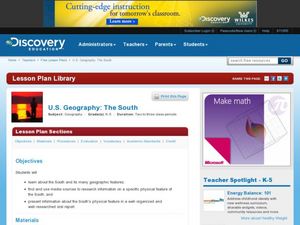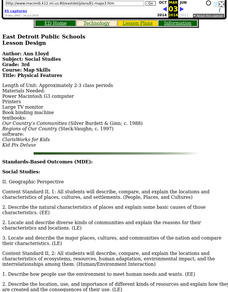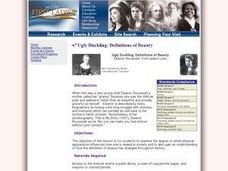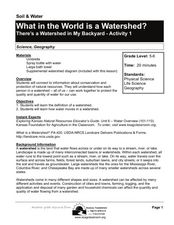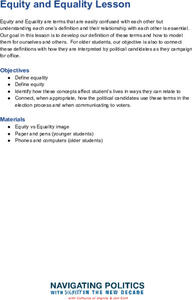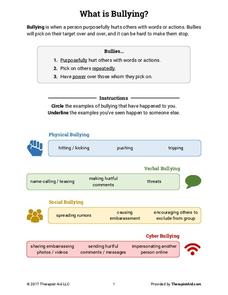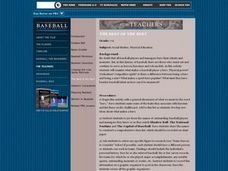Curated OER
The Physics of Cell Phones
Learners explain how cell phones work. In this physics lesson, students describe the advantages and advantages of having one. They identify the different parts of a cell phone.
Parkwood Hill Intermediate
Map Skills Project
Young pupils develop their mapping skills and knowledge by designing their own islands, using geographic terms and physical features they have learned as features of their work.
Curated OER
History of Physics
In this history worksheet, learners use the questions to discover meaningful science and history connections. The worksheet is meant to be viewed online to access individual answers.
Curated OER
U.S. Geography: The South
Young geographers complete a research project. They list the physical features found in the American South. They then discuss the economy, culture, and geography found in the South. They work in groups to research one of the five...
Geography for Geographers
Five Themes of Iceland
How do the five themes of geography relate to the country of Iceland? Pupils learn about everything from the differences between relative and absolute location to how humans both adapt and change the environment. The presentation...
Curated OER
Physical Features
Students draw physical land features using ClarisWorks or Kid Pix, write their definitions, create slideshow, and create class geography book.
American Institute of Physics
Historical Detective: Edward Alexander Bouchet and the Washington-Du Bois Debate over African-American Education
Young scientists meet Edward Alexander Bouchet who, in 1876, was the first African American to receive a PhD in Physics. This two-part lesson first looks at the debate between Booker T. Washington and W.E.B. Du Bois about the type of...
Curated OER
Land Elevation
Students investigate land elevation. In this map skills lesson plan, students use a physical map to identify various elevations of the land. Students find landform features such hills and coastlines.
National First Ladies' Library
Ugly Duckling: Definitions of Beauty
Students examine the degree to which physical appearance influences how one is viewed in society. They draw a timeline of the history of beauty and complete a visual scavenger hunt of history.
Curated OER
What in the World Is a Watershed?
Students discover the role of a watershed. In this geography lesson, students are shown a diagram of a watershed and discuss the definition of a watershed. Students demonstrate the role of a watershed by using an umbrella and spraying it...
Cultures of Dignity
Equity and Equality Lesson
Equality does not equal equity and this lesson explains why. Class members compare two images--one labeled "Equality" and the other "Equity." Using the provided discussion questions, they then develop definitions that distinguish between...
Washington State University
Defining Bullying
How can you recognize bullying? How is verbal bullying different from physical or social bullying, and when has a joke gone too far? Learners use their own experiences and ideas to inform the discussion.
Therapist Aid
What is Bullying?
What is the definition of bullying, and how can you deal with it? Elementary and middle schoolers discuss verbal, physical, social, and cyberbullying before talking about strategies to avoid and stop bullying in their school.
Lemos and Crane
Homophobic Bullying
Discuss homophobia and bullying with a collaborative and supportive lesson plan. Class members engage in a series of activities focused on the ways bullies use physical, verbal, mental and emotional, sexual, and cyber tactics to spread...
Curated OER
The Community of Fun
Students participate in a parachute activity. In this physical education lesson, students use teamwork to lift a parachute and keep soft balls on top of it. Students demonstrate how working together can accomplish a goal.
Curated OER
Matching Worksheet: Geography
In this vocabulary worksheet, learners match geography words to their definition. Students identify the definition to words dealing with the physical and human features of land, and terms dealing with interpreting a map. They solve 12...
Curated OER
Exploring Hawaiian Mountain Zones
Fourth graders watch a video that describes the climate and vegetation zones of Hawaii. They describe the different physical conditions that create vegetation zones from the sea to the mountains. In groups, they create an illustrated...
Curated OER
The Best of the Best
Young scholars participate in a discussion about the definition of the word 'hero'. They research baseball players and managers and then engage in a formal debate about the merits of their subjects.
Curated OER
Euthanasia and the T4 Program
High schoolers examine the euthanasia campaign used to rid the world of mentally and physically disabled Germans. Using the internet, they gather information either supporting or disagreeing with the idea of taking a life by euthanasia....
Curated OER
Watersheds: The San Francisco Bay Watershed
Sixth graders make a model of a watershed. In this geography lesson, 6th graders view a shaded relief map of California and locate landmarks. Students examine the San Francisco Bay Watershed by following the journey of water through...
Curated OER
Building Bridges for Young Learners--Culture
Students explore the concept of "culture." In this cross curriculum literacy and world history lesson, students listen to a letter written by a child from Namibia, then compare and contrast life in Africa with their own life. Students...
Idaho Coalition
The Hunger Games: Gender Empowerment
The odds are in your favor that your pupils will love this lesson that uses The Hunger Games to launch a study of gender empowerment, as well as the influence of social constructs of gender. Groups discuss how Katniss Everdeen and Peeta...
Judicial Learning Center
Your Day in Court
Whether out of choice or necessity, people want to know what will happen on a typical day in court. A helpful lesson walks scholars in the field of criminology through the trial process from opening statements to the final verdict.
Curated OER
Landform Dictionary
Third graders use a word processing program to create a working dictionary, including definitions and pictures, of physical land forms used in the study of different regions of the world.



